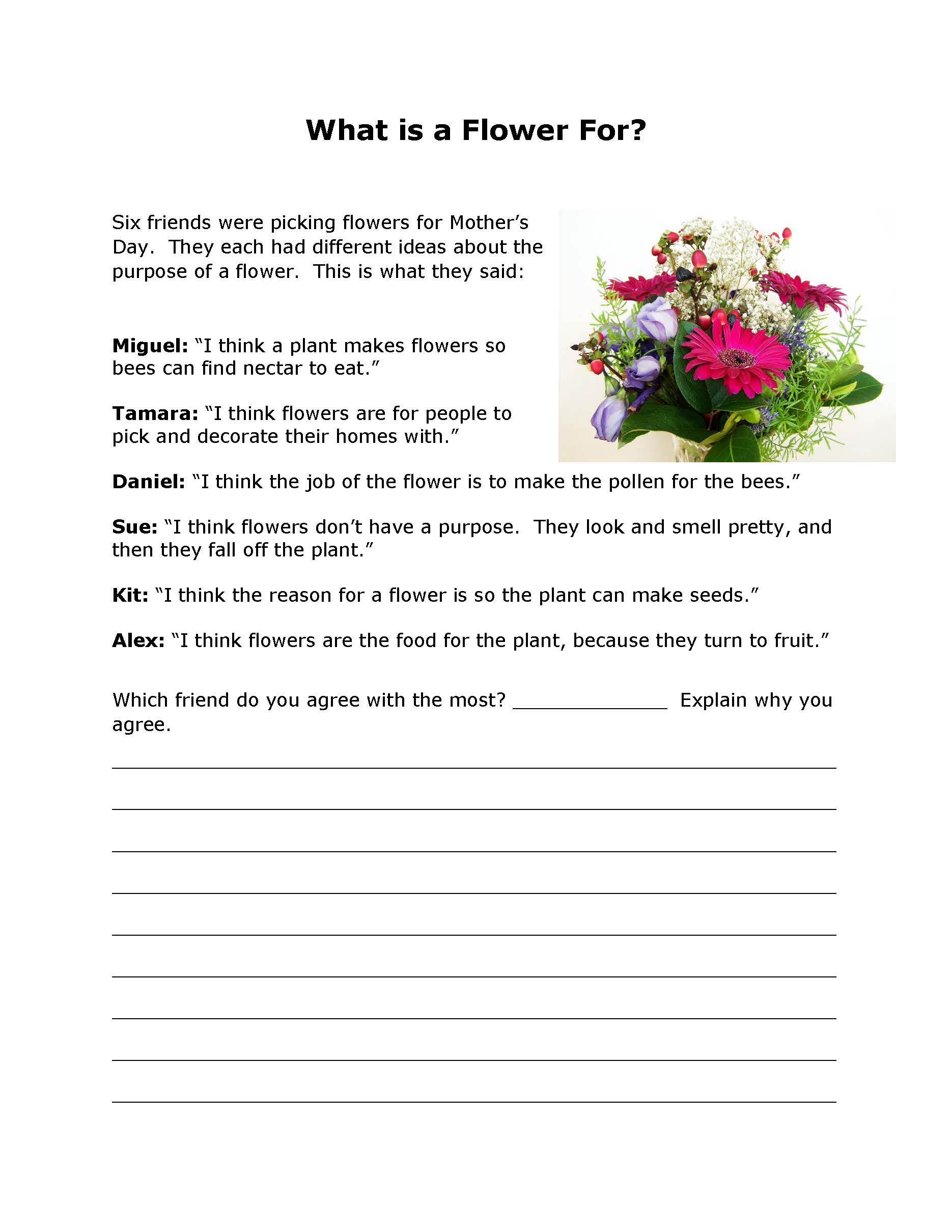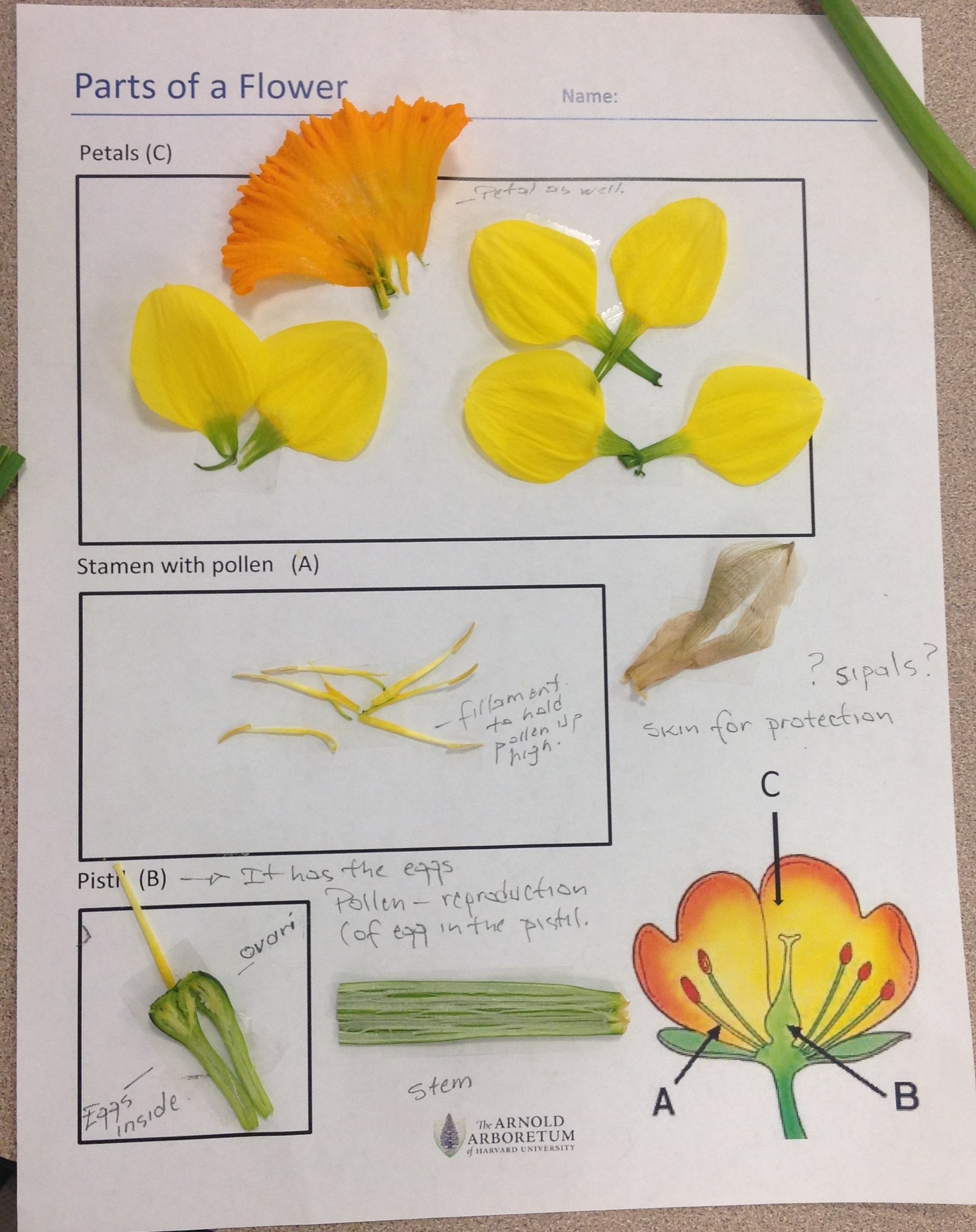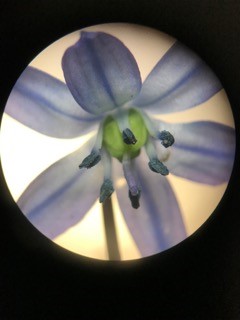Last Saturday teachers participated in the Flower Dissection program of the Arboretum for Educators, a monthly program aimed at helping teachers learn more about using the natural world for purposeful science learning. This particular class followed the 5E Instructional Model, both as a way to learn new teaching strategies and to experience what it is like to construct new ideas from previous ones. In this model, the phases of learning are Engage, Explore, Explain, Elaborate, and Evaluate. A daffodil served as the model flower for teachers to dissect and around which experiences were built. Below is a snapshot of the model in action.
Engage:

Here are two ways students can be drawn into a study of flowers: “What is a flower for? Discuss with a partner” or “Draw a flower from memory and label what you know.” In both cases, teachers are looking to elicit background knowledge and perhaps illuminate misconceptions that students may have around this topic. By listening carefully and asking probing questions, a teacher can gather a lot of information that can be addressed during the rest of the study.



Ample time should be allowed for students to examine a flower using a hand lens or to make an observational drawing, along with a guided dissection. Students should be guided to take petals apart and view them under stereo microscopes, then progress from the outside in, examining the stamen, pistil, and ovary of the daffodil. Labeling flower parts should be kept to a minimum; rather, students should focus on form and hypothesize about each part’s function, providing a clear reason for their claims. Providing students with additional tools such as visual organizers, black chenille stems (to collect pollen), and T pins can facilitate more discovery and better ways to interact with the flower parts.
Explain:

This phase allows a teacher to help students connect their thoughts and discoveries with facts. Provide a labeled flower diagram so students can review their notes or drawings and add the correct vocabulary. Pose questions to highlight the location of the flower parts in relation to the whole, and explain the process of fertilization that leads to seed set. Watch a time-lapse video to further illustrate how a flower changes over time. Complex questions that need further research can become part of the next phase of learning.
Elaborate:


During this phase, students go outside to apply newly-gained knowledge. They are encouraged to view a wide selection of flowers in their natural settings so they can see that not all flowers are “perfect.” Some only have stamen, others have multiple pistils, the number of petals differ, and not all pollen is yellow! This phase is sometimes a deeper level of exploration, one during which important questions may arise and true curiosity can spark an investigable question or further research.
Evaluate:

Here are some ways for teachers to assess student learning: a) give each child a new flower to dissect and instruct them to learn all they can about the flower, drawing and labeling all known parts with explanations; b) give students photos of partial flowers to describe what they are looking at and explain how they know; c) create a comic strip narrative that explains how flowers are fertilized, making sure to use correct vocabulary and accurate drawings. In each of these examples students are asked to make sense of their learning and synthesize the important parts with a view toward generalizations and concept formation.
Educators came away with many new ideas to incorporate into their teaching practice, as well as a better understanding of how to use the outdoors for meaningful science content learning. Learn more about upcoming Arboretum for Educators events at the Arnold Arboretum.